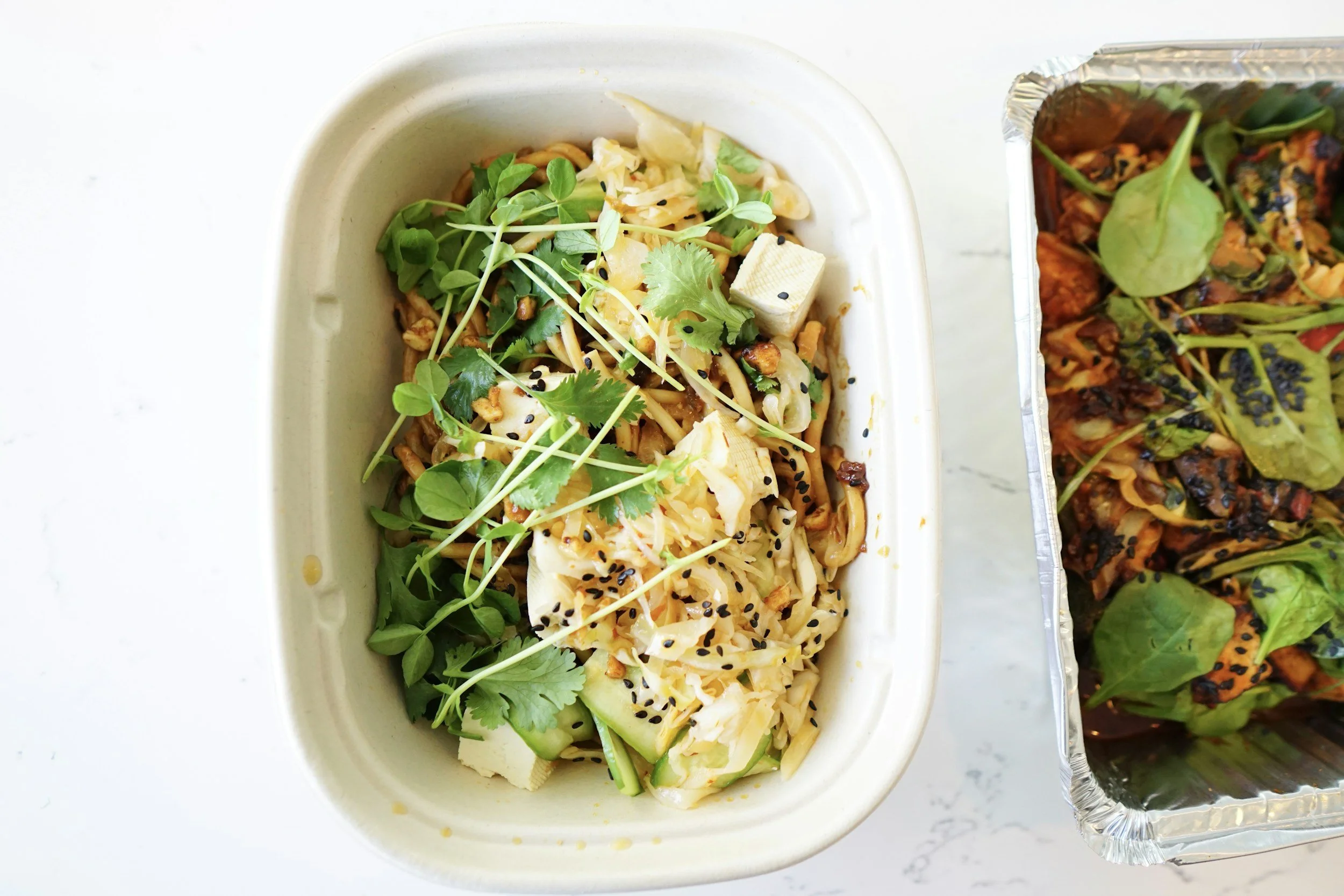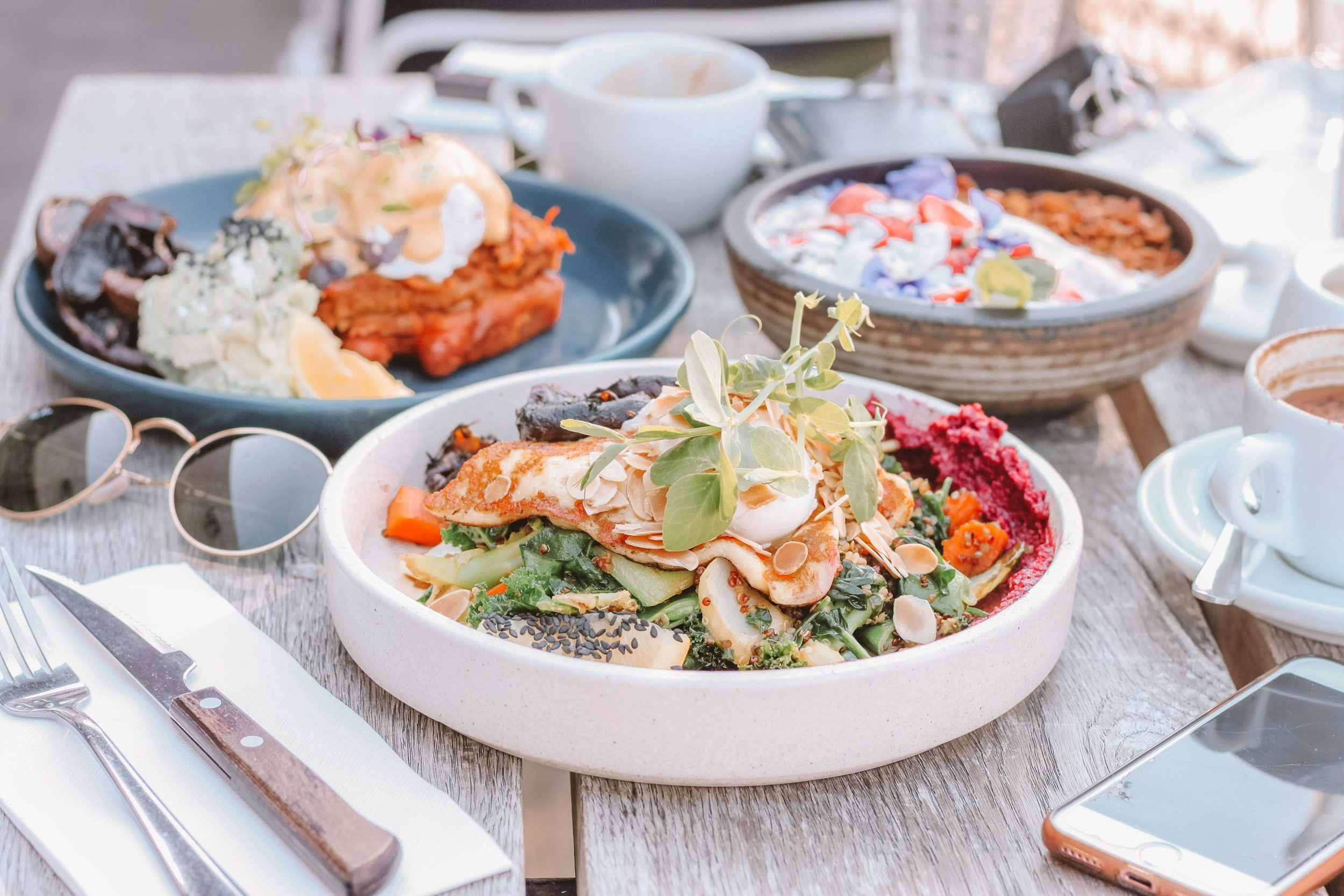How to Select Healthy Takeaway Options: Your Guide to Guilt-Free Dining
Introduction to Healthy Eating
In today's fast-paced world, maintaining healthy eating habits can be challenging. With busy work schedules, family commitments, and social activities, many of us find it difficult to cook at home all the time. For these reasons, takeaway food becomes a convenient and sometimes necessary option. However, it’s important to learn how to make the best choices when eating out or ordering takeaway. Understanding how to select healthy takeaway options allows you to enjoy convenient meals without compromising your nutrition goals, supporting a balanced lifestyle even amidst a hectic routine.
What You Will Learn from This Guide
In this guide, you will discover practical strategies to select healthy takeaway options that fit your lifestyle without sacrificing taste or convenience. We will explore how to navigate menus wisely, understand nutritional information, and make balanced choices even when options seem limited.
Additionally, you'll gain insights into managing hunger and cravings to avoid impulsive, less healthy decisions. By the end, you'll be equipped with actionable tips to enjoy takeaway meals guilt-free and maintain your healthy eating goals.
Understanding Food Choices When Tired and Hungry
It's common to make less healthy food choices when you're tired and hungry, often driven by what smells or looks most appealing rather than what is best for your body. This impulsive behavior can lead to selecting high-calorie, high-fat, or high-sodium takeaway meals that don't support your nutrition goals. Recognising these tendencies is the first step toward making better decisions.
Here are three tips to help you make healthier choices before ordering takeaway:
Have a Healthy Afternoon Snack: Eating a balanced snack in the afternoon, such as a piece of fruit with nuts or yogurt, can stabilize blood sugar levels and reduce overwhelming hunger that leads to impulse orders.
Establish a Proper Lunch Routine: Prioritise a nutritious lunch to keep energy levels steady throughout the day. This reduces the likelihood of extreme hunger later, which often triggers unhealthy takeaway cravings.
Plan Ahead Before Ordering: Take a moment to review the takeaway menu with a clear mind, considering nutritional information and healthier options. Avoid ordering when overly hungry or stressed, as this can impair judgment.
Implementing these simple habits can help you avoid impulse orders based solely on aroma or appearance, leading to more satisfying and health-conscious takeaway choices.
Healthy eating is essential for maintaining a balanced lifestyle, and choosing the right takeaway food options can be challenging - consider opting for steamed dumplings or grilled chicken for a healthier alternative to fried chicken.
Takeaway food can be a convenient option, but it’s crucial to make informed choices to avoid deep-fried foods and high-sodium meals.
Healthy takeaway food options are available, and selecting the right dishes can support a guilt-free dining experience.
Look for menu items that feature lean meats, fresh salad, and brown rice to make a healthier choice.
Discover the best healthy takeaway options, including spicy veg trio and steamed fish, to satisfy your cravings without compromising your health.
Understanding the Importance of Nutrition
Nutrition plays a vital role in maintaining overall health, affecting everything from energy levels and immune function to long-term disease prevention. Making mindful food choices, especially when eating takeaway, helps ensure your body receives the nutrients it needs to function optimally.
Fast foods, particularly those high in saturated fats and added sugars, can negatively impact health by increasing the risk of heart disease, obesity, and type 2 diabetes. Saturated fats raise LDL (bad) cholesterol levels, which can lead to clogged arteries and cardiovascular problems.
Choosing healthier takeaway options, such as grilled chicken or steamed dumplings, reduces your intake of unhealthy fats and excess calories, supporting better weight management and heart health.
A balanced diet rich in lean proteins, fresh vegetables, whole grains, and healthy fats promotes sustained energy, improved digestion, and overall well-being.
Making healthier takeaway choices also helps reduce inflammation and supports a stronger immune system, enabling you to feel more energetic and resilient in your daily life.
Ultimately, prioritising nutrition when selecting takeaway food contributes to long-term health benefits, including a lower risk of chronic diseases and enhanced quality of life.
Benefits of Balanced Diets
Benefits of maintaining a balanced diet include better weight management, improved energy levels, reduced risk of chronic diseases, and enhanced overall well-being. By making better takeaway choices that align with a balanced diet, you support these positive outcomes. Effective weight management through balanced nutrition often leads to increased energy, which boosts your motivation to engage in physical activity and make healthier lifestyle decisions. This creates a beneficial cycle where improved energy and motivation help you continue making better food choices.
A balanced diet rich in lean proteins, whole grains, fresh vegetables, and healthy fats supports vital bodily functions such as digestion, immune health, and hormone regulation. This nourishment can result in clearer mental focus, greater stamina, and a stronger immune system, contributing to a higher quality of life and lowering the risk of chronic diseases like heart disease, diabetes, and inflammation-related conditions.
Additionally, balanced meals help maintain steady blood sugar levels, preventing energy dips and mood fluctuations, which enables sustained productivity and emotional stability throughout the day. Over time, these positive effects reinforce healthy habits, making it easier to consistently select nutritious takeaway options and enjoy the long-term benefits of good health and vitality.
Why We Have Takeaway and Its Convenience
Takeaway food exists primarily to offer a convenient meal solution for people with busy lifestyles. In today’s fast-paced world, many individuals juggle demanding work schedules, family responsibilities, and social commitments, leaving little time or energy to cook at home. Takeaway provides a quick and accessible option to satisfy hunger without the need for meal preparation or cleanup, making it an appealing choice during hectic times.
The original idea behind takeaway was to help people by offering ready-to-eat meals that save time and effort, allowing them to focus on other important tasks. However, over time, many have become reliant on takeaway as a regular part of their diet rather than an occasional convenience. This reliance has raised concerns because much of the takeaway food available is heavily ultra-processed, meaning it contains refined ingredients, preservatives, additives, and often unhealthy fats and sugars.
Five Negatives of Takeaway Food
Heavily Ultra-Processed: Takeaway meals often contain multiple processed ingredients that have been altered from their natural state, which can negatively impact health.
High in Sodium: Many takeaway foods are loaded with salt to enhance flavor and preserve the food, contributing to excessive sodium intake linked to high blood pressure.
Excessive Saturated and Trans Fats: Fried and battered items commonly found in takeaway menus increase unhealthy fat consumption, raising the risk of heart disease.
High Calorie and Energy-Dense: Portion sizes and cooking methods often result in meals that are calorie-rich, promoting weight gain when consumed frequently.
Low in Nutrients and Fiber: Takeaway meals frequently lack sufficient vegetables, whole grains, and fiber, which are essential for digestive health and overall nutrition.
The World Health Organization (WHO) has expressed concerns about the growing consumption of ultra-processed foods, including many takeaway options. They warn that these foods contribute to the global rise in obesity, non-communicable diseases, and poor dietary quality. WHO advocates for reducing the intake of ultra-processed foods and encourages a healthy diet, through healthier eating habits to improve public health outcomes.
Understanding these concerns helps highlight the importance of making mindful choices when opting for takeaway and balancing convenience with nutritional quality.
How to Choose a Healthy Takeaway
Choosing a healthy takeaway involves several thoughtful steps to ensure you enjoy your meal without compromising your nutrition goals:
Review the Menu Carefully: Look for dishes that highlight lean meats, fresh vegetables, and whole grains. Avoid items described as fried, crispy, battered, or creamy, as these often indicate higher fat and calorie content.
Check Nutritional Information: Many fast food outlets provide nutritional details online or on-site. Use this information to compare options and select meals lower in saturated fat, sodium, and calories.
Opt for Grilled or Steamed Items: Choose grilled chicken, steamed fish, or steamed dumplings over deep fried options to reduce unhealthy fats.
Limit High-Sodium and High-Fat Additions: Skip or minimise sauces, dressings, heavily processed cheeses, and salty condiments, which can add excess sodium and calories.
Control Portion Sizes: Select smaller meals, avoid meal deals with large sides of chips and sugary drinks, and consider sharing larger portions to avoid overeating.
Choose Healthier Sides: Swap fries or chips for steamed vegetables, salads, or brown rice to increase fiber and nutrient intake.
Stay Hydrated with Water: Avoid sugary drinks and opt for water or unsweetened beverages to reduce added sugar consumption.
How to Make Healthy Choice Options at Popular Fast Food Chains
Making mindful choices at popular fast food outlets can help you enjoy your meal while maintaining a healthy diet. Here are some healthier options to consider:
McDonald's: Choose items like a Grilled Chicken Snack Wrap, which is lower in calories and sodium. Pair it with a side of salad and bottled water.
Subway: Build your own salad with grilled chicken stips or turkey and load up on fresh salad toppings. Avoid high-calorie options, such as meatball subs, and skip processed cheeses and creamy dressings when possible. Instead, opt for avocado to top it off.
KFC: Choose grilled chicken wraps over fried chicken pieces. Pair your meal with water and avoid soft drinks and chips to reduce extra fat and sodium intake.
Oporto: The Chicken Salad Bowl, offers a balanced mix of lean protein and fresh vegetables, even when served with dressing.
Red Rooster: While the Classic Roast Combo offers a roasted chicken piece with your choice of mashed or sweet potato and peas, paired with water, it’s important to note that this option is not ideal for a truly healthy takeaway meal. Red Rooster’s menu tends to be high in sodium, and they do not offer grilled chicken options. Additionally, the available sides are often deep-fried or laden with sauces, which can add extra fat and salt. To reduce sodium intake, it’s advisable to skip the gravy, but overall, Red Rooster may not be the best choice if you are prioritising low-sodium, healthier options. Being aware of these factors can help you make a more informed decision when selecting takeaway meals from this chain.
When choosing takeaway meals, it’s best to opt for grilled meats rather than fried or skin-on chicken to reduce unhealthy fat intake. Be mindful of dressings and sauces, as these can add extra calories, saturated fat, and sodium. Choosing salads or wraps filled with lean proteins and plenty of fresh vegetables is a great way to enjoy a tasty, balanced meal. Pair your meal with water instead of sugary drinks to keep added sugars and calories in check. These simple choices can help you enjoy takeaway food while staying aligned with your healthy eating goals.
How to Make Healthy Choices at Popular Dinner Places
When dining out or ordering takeaway from popular dinner places such as Chinese, Asian, Indian, or other cuisines, making healthy choices can sometimes feel overwhelming. However, following some general guidelines can help you enjoy your meal while keeping nutrition in check:
Avoid Heavily Creamy or Rich Sauces: Creamy curries, thick gravies, and rich sauces often contain high amounts of saturated fat and calories. Instead, opt for tomato-based, broth-based, or lightly spiced dishes.
Choose Salads, Stir-Fries, or Steamed Options: Dishes featuring fresh vegetables, lean proteins, and minimal oil, such as stir-fried vegetables, steamed fish, or salads, are typically lower in fat and calories while providing important nutrients.
Be Mindful of Sodium Content: Many takeaway meals, especially Asian dishes, can be high in sodium due to sauces and seasonings. Request reduced-sodium sauces when possible, and avoid adding extra soy sauce or salty condiments.
Limit Sugary and Deep-Fried Items: Fried appetisers like spring rolls, tempura, or battered seafood, as well as sugary drinks and desserts, add unnecessary calories and unhealthy fats. If you do indulge, keep portions small.
Practice Portion Control: If you prefer richer or fried dishes, controlling portion size is key. Consider sharing meals, ordering smaller portions, or saving leftovers for another time.
Eat Slowly and Mindfully: Taking your time to eat helps digestion and allows you to recognise fullness cues, reducing the risk of overeating.
Choose Water Over Sugary Drinks: Staying hydrated with water supports digestion and helps avoid extra calories from sugary beverages.
Skip Starters or Appetisers When Possible: Many starters are fried or high in calories. Starting directly with your main dish can help manage overall calorie intake.
By applying these general tips across different cuisines and restaurants, you can enjoy a diverse range of flavours and dishes while maintaining a balanced and healthy diet.
The Importance of Portion Control
Portion control is essential when consuming takeaway food to maintain a healthy diet. Avoiding large servings and choosing smaller portions can help reduce calorie and fat intake. Consider sharing meals or saving leftovers for later to maintain portion control. Eating slowly and mindfully can also help control portion sizes. Be aware of the most significant issues with takeaway food, such as high calorie and fat content, and take steps to mitigate them. Queensland Health has a handout, Understanding Portion Sizes, which provides information on what constitutes a portion and how to manage portions effectively.
Freezing Meals for Takeaway Nights
Freezing meals in advance is a smart strategy for busy days when you crave the convenience of takeaway but want to maintain healthy eating habits. Preparing and freezing your own meals allows you to control the ingredients, portion sizes, and nutritional content, making it easier to avoid the pitfalls of high-calorie, high-sodium, and deep-fried takeaway options.
Benefits of Freezing Meals:
Convenience: Having ready-to-eat meals in the freezer saves time and effort on busy days.
Healthier Choices: You can prepare balanced meals with lean meats, fresh vegetables, and whole grains, avoiding excess fats and sodium.
Cost-Effective: Cooking in bulk and freezing meals reduces the need for frequent takeaway orders, saving money.
Portion Control: Pre-portioned meals help prevent overeating, supporting your nutrition goals.
3 Easy Meals to Freeze for Takeaway Nights:
Chicken and Vegetable Stir-Fry: Use skinless grilled chicken, a variety of fresh vegetables, and a light sauce. Freeze in individual portions for a quick, nutritious meal.
Homemade Vegetable and Lentil Curry: Made with tomato-based sauce and coconut milk for creaminess, this dish is rich in fiber and protein, perfect for freezing and reheating.
Baked Salmon with Brown Rice and Steamed Broccoli: A balanced meal packed with omega-3 fatty acids and fiber that freezes well and reheats easily.
By incorporating freezing meals into your routine, you can enjoy the ease of takeaway nights without compromising on health or taste.
Summary and Conclusion
Choosing healthy takeaway options is entirely possible with mindful planning and informed decisions. By focusing on lean meats, fresh vegetables, whole grains like brown rice, and avoiding deep-fried foods and high-sodium sauces, you can enjoy convenient meals without compromising your nutrition goals. Portion control and being aware of nutritional information help manage calorie intake and support balanced eating. Incorporating strategies such as reviewing menus carefully, opting for grilled or steamed items, and limiting sugary drinks further enhance the healthfulness of takeaway meals. Whether dining out or ordering in, these tips allow you to maintain healthy eating habits while enjoying the convenience and taste of takeaway food guilt-free.
Lena Anson-Smith, Accredited Dietitian & Nutritionist
Lena helps busy women who feel tired, bloated, or not quite like themselves connect the dots between what’s going on in their bodies and what they truly need.
With a former career as a busy businesswoman in the city and her own experiences with hormonal imbalance, she now runs a flexible, online dietetics practice that supports women in building energy, easing digestion, and feeling confident and balanced through Mediterranean-inspired nutrition strategies, practical tools, and tailored plans that fit real life.
Want to feel more energised, clear, and confident in your body?
What Next?
Interested in understanding more read: Why is Good Nutrition Important for Your Health?
Extra Resources below to help make eating out a healthier one
Baker Heart & Diabetes Institute: Eating Out and Eating Out the Healthy Way
Queensland Government NEMO handbook: Healthy Eating out and Takeaway Guide
Download your free guide 5 Simple Tweaks to learn the small, practical strategies that actually make a difference to your energy and digestion.






